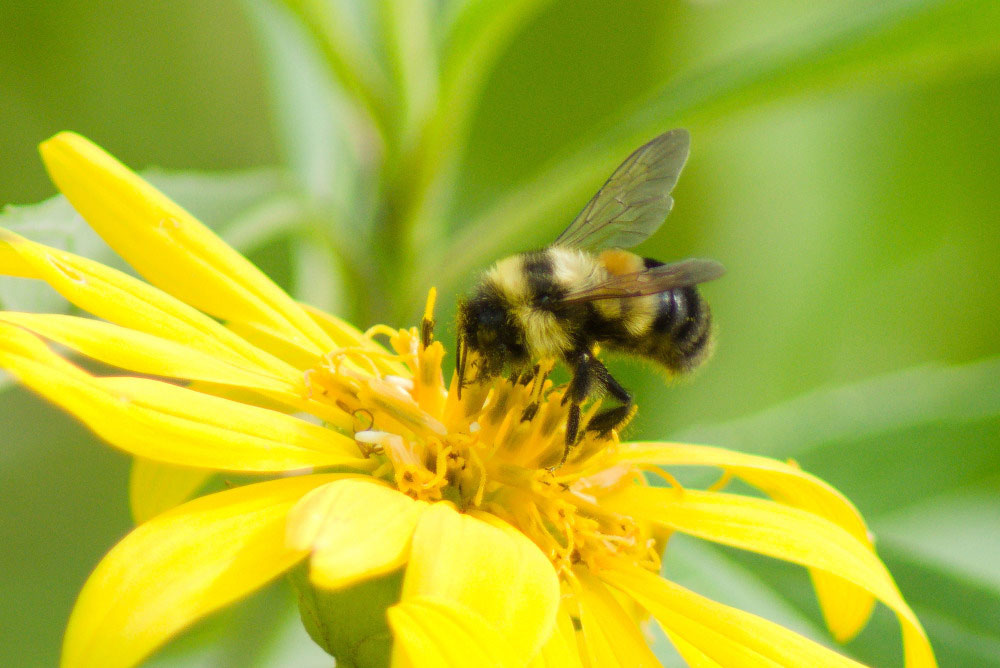
It’s no secret that Great Smoky Mountains National Park is a hotspot of biological diversity. Not only does it offer a range of environmental conditions to support plant and animal life, no ocean or glacier has disturbed it for over a million years, giving species lots of time to evolve.
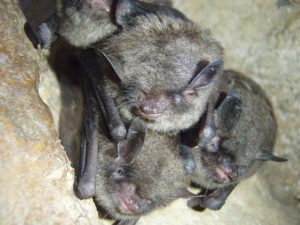
In much more recent history, that diversity was protected across the nation 50 years ago by the signing into law of the Endangered Species Act. Saving 99 percent of the species it has striven to protect since December 28, 1973, the ESA recognizes the “aesthetic, ecological, educational, historical, recreational, and scientific value” of endangered and threatened wildlife and plants.
The Smokies has its own list of endangered and threatened residents that the park and its partners are helping to protect, including a few mammals. One of these kept NPS Science Coordinator Paul Super awake during a night he spent at Cosby Knob, thumping and scurrying as it landed and took off from the roof of the shelter.
Living in the high-altitude conifer forests of East Tennessee and Western North Carolina, the Carolina northern flying squirrel is almost never seen since it is rare and entirely nocturnal. According to Mammals of the Smokies, “the fact that this subspecies is endangered in its southern range and that it occurs in the Smokies makes the park an important haven for this squirrel.”
Another mammal, the endangered Indiana bat, has declined drastically during the past 40 years despite recovery efforts. The park is near the southern edge of this species’ range, according to Mammals of the Smokies, and at one time housed “the largest known Indiana bat hibernating colony south of Kentucky, usually numbering 6,000–10,000 bats” with two smaller colonies numbering in the hundreds. A fraction of that population remains, having been heavily impacted by white-nose syndrome since the discovery of the fungal disease in the park in 2010.
Along with the threatened northern long-eared bat, Super says, “We only recently discovered that the threatened gray bat was also using the park. We knew it fed over larger rivers just outside the park boundary.”
Not long into the park’s history, human decisions radically altered its important aquatic life. NPS Supervisory Fisheries Biologist Matt Kulp relates the story in Fishes of the Smokies:
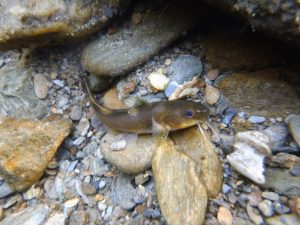
“In 1957, the US Fish and Wildlife Service in cooperation with several state and federal agencies used the fish pesticide rotenone to remove 46 fish species, including four species now federally listed, from lower Abrams Creek. The purpose was to establish a trophy rainbow trout fishery in the newly built Chilhowee Reservoir.”
Application of this pesticide removed all native fish from the main stem of lower Abrams Creek downstream of Abrams Falls, formerly the most diverse stream in the Smokies.
“Although roughly 35 of the 46 species recolonized lower Abrams Creek from other tributaries, roughly 10 species did not,” Kulp says. “Smoky madtom were presumed to be extinct until a 1980 discovery of a population in nearby Citico Creek in Monroe County, Tennessee.”
Since the mid-1980s, NPS fisheries scientists have partnered with nonprofit Conservation Fisheries to rear and restore the threatened and endangered species of fish historically found here. Restoration efforts for the endangered Smoky madtom and Citico darter, along with the threatened yellowfin madtom, have had great success, and each of these three species is now naturally reproducing in Abrams Creek.
“We tried to reintroduce the threatened spotfin chub,” says Super, “but it needs larger river habitat for part of its life, and the existing dams outside the park have prevented access to these rivers by chub from Abrams Creek.”
The park also works to protect two rarely seen endangered arthropods: a fuzzy pollinator called the rusty-patched bumble bee and the high-elevation spruce-fir moss spider. Proposed for the threatened list is the monarch butterfly, which has benefitted, says Super, from park partner Great Smoky Mountains Institute at Tremont and tireless outdoor educator Wanda DeWaard “tagging and monitoring in Cades Cove for over a decade to better understand where our butterflies migrate through and where they spend the winter.”
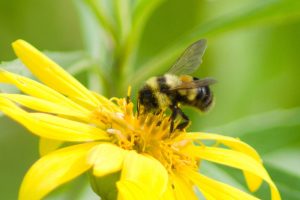
In popular success stories about other winged creatures, the banning of DDT along with reintroduction efforts have allowed the bald eagle and peregrine falcon to recover sufficiently that they have been delisted from the Endangered Species Act. Super says that, “while we do not have red-cockaded woodpeckers in the park at present, we did at one time and have restored habitat to allow for them to either return on their own or to potentially be reintroduced at some future time.”
Readers of Smokies Life journal will find an article in the spring 2024 issue devoted to endangered plants and the people who protect them. Penned by regular contributor Alix Pfennigwerth, herself a former Smokies ranger, it will highlight the endangered rock gnome lichen and spreading avens along with the threatened Virginia spiraea.
“There are an awful lot of rare plants in the park,” says Rare Plant Monitoring Program manager Josh Albritton. “They may be rare locally at the park level, or they may be threatened and endangered at the state level. But plants that are federally listed by the ESA are threatened and endangered across their entire known range. And the ESA mandates that we protect, and in some cases recover or restore, these species.”
Protecting endangered species means taking action to maintain existing populations.
“This might involve installing educational signage or barriers near the species’ habitat, removing invasive species from the area, or limiting the types or timing of activities that can take place there,” Pfennigwerth explains.
Recovery or restoration measures are taken to actively expand existing populations or to reintroduce a species into an area entirely. The ESA maintains specific standards for when a species can be considered ‘recovered’ overall and potentially eligible to be removed from the list.
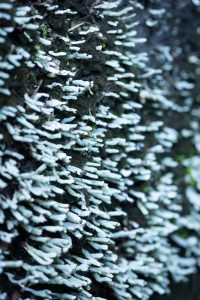
“Protecting threatened and endangered plant species is super important for maintaining biodiversity,” says Albritton. “It’s even more important for a park like us, because many of these species only exist in a handful of places in the southeastern US, and only in a very small number of habitats.”
In effect, Great Smoky Mountains National Park is a refuge for these fragile species.
“We have the Endangered Species Act to thank for a lot of biodiversity preservation,” says Will Kuhn, director of science and research for Discover Life in America, the park partner that coordinates the All Taxa Biodiversity Inventory—a groundbreaking effort to identify and understand all forms of life in the park. Throughout 2023, both DLiA and the ATBI have been celebrating their 25th anniversary.
“In addition to giving species legal protection, the ESA champions the partnership of collaborators whose perspectives and expertise are all vital to safeguarding the endangered and threatened plants and animals residing here and ensuring their survival for future generations.”
Ten years after the Endangered Species Act became a law in 1973, Great Smoky Mountains National Park was designated as a World Heritage Site in 1983. We have many organizations and individuals to thank for their work to protect and preserve the plants and animals that make Western North Carolina and East Tennessee such special places to live and work. I’d be surprised if you yourself are not one of them.
Subscribe to get the latest posts sent to your email.
The Great Smokies Welcome Center is located on U.S. 321 in Townsend, TN, 2 miles from the west entrance to Great Smoky Mountains National Park. Visitors can get information about things to see and do in and around the national park and shop from a wide selection of books, gifts, and other Smokies merchandise. Daily, weekly, and annual parking tags for the national park are also available.